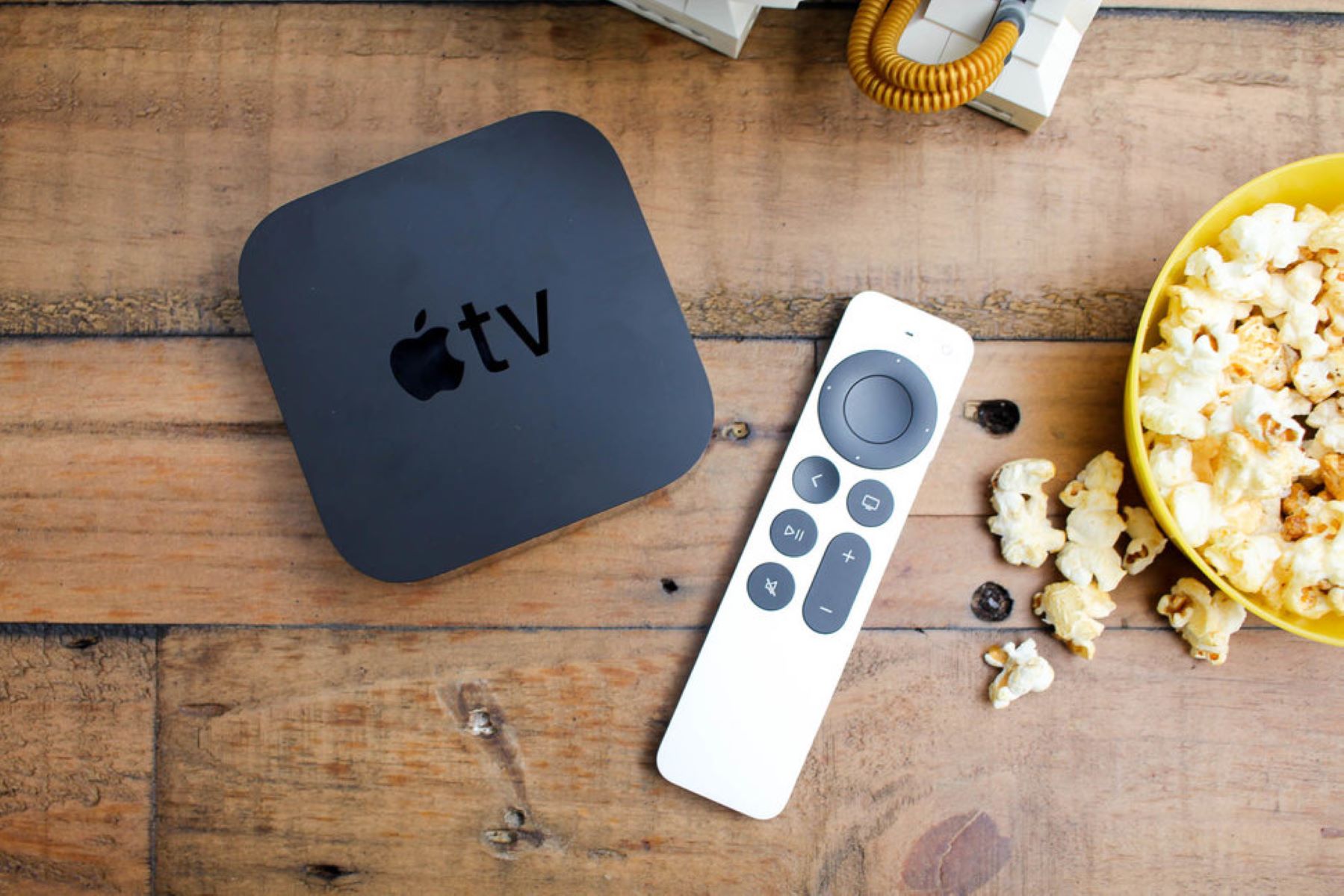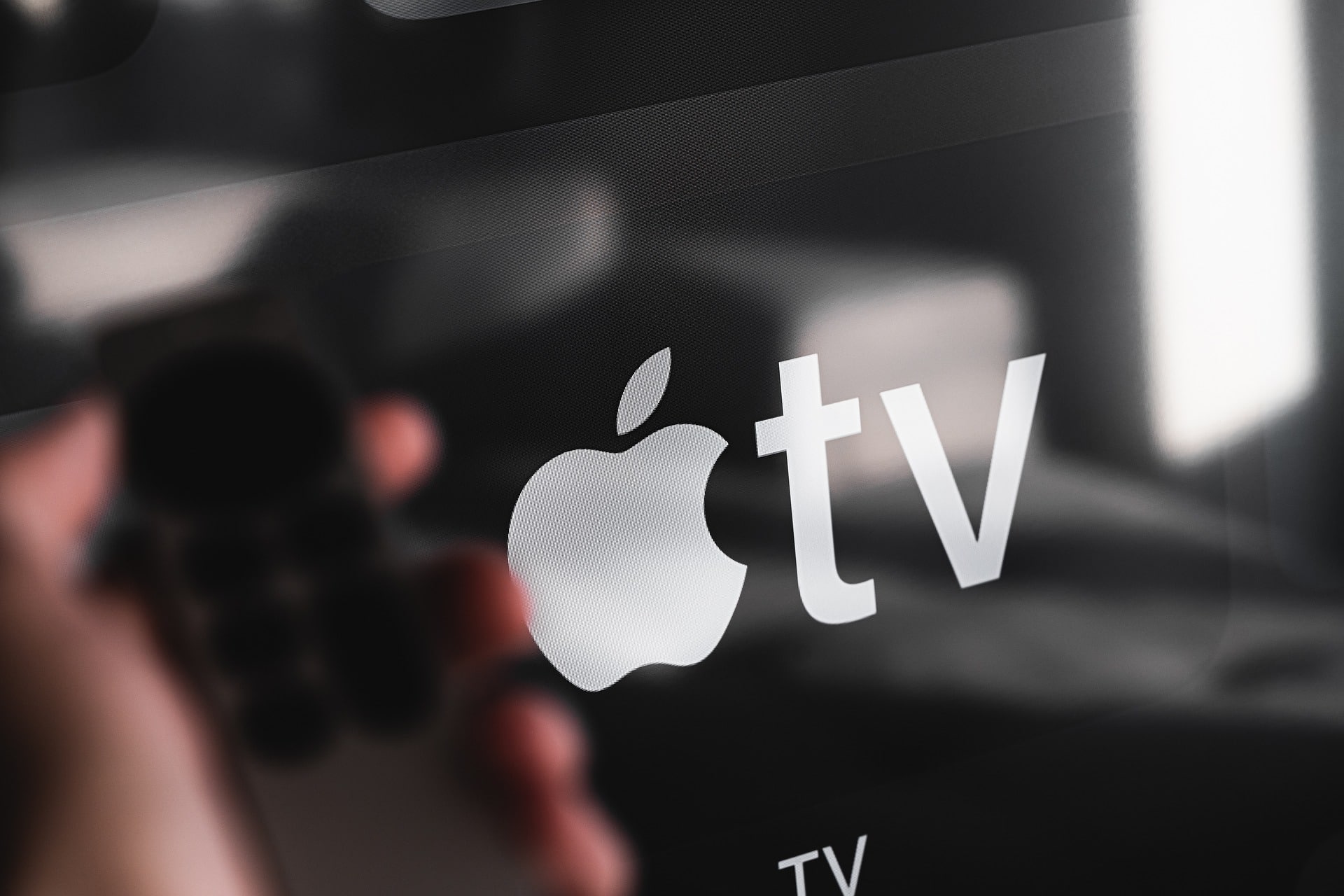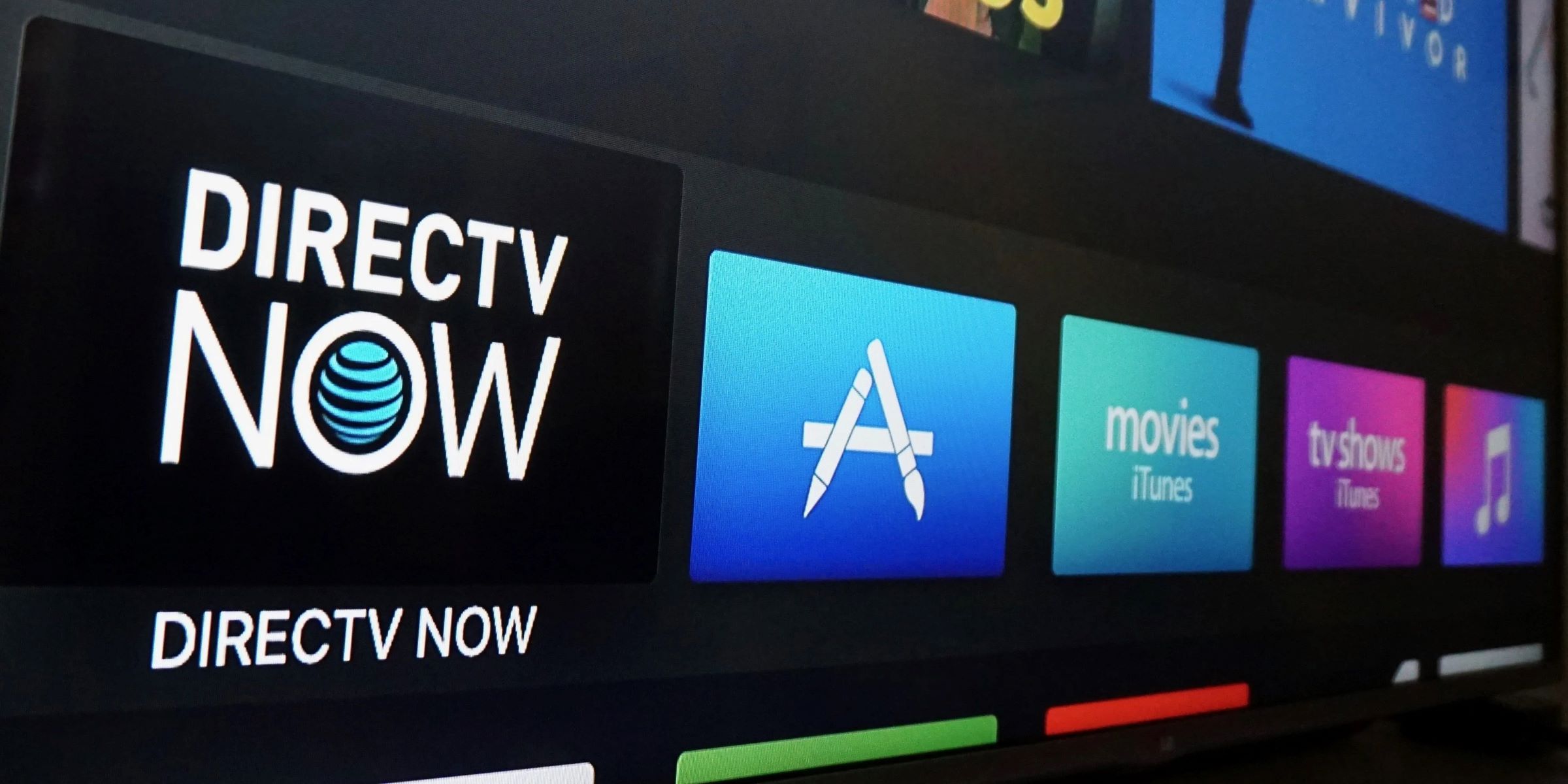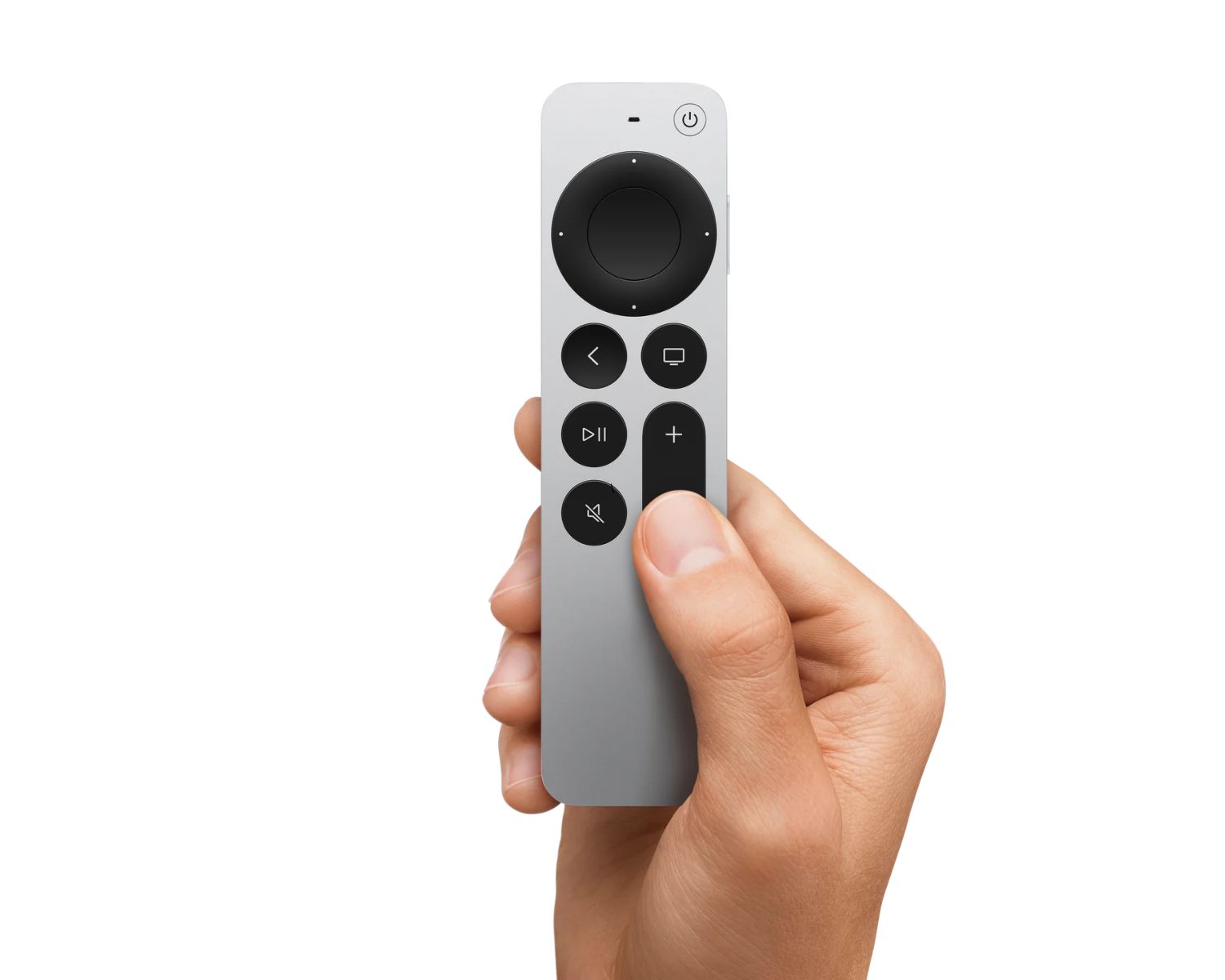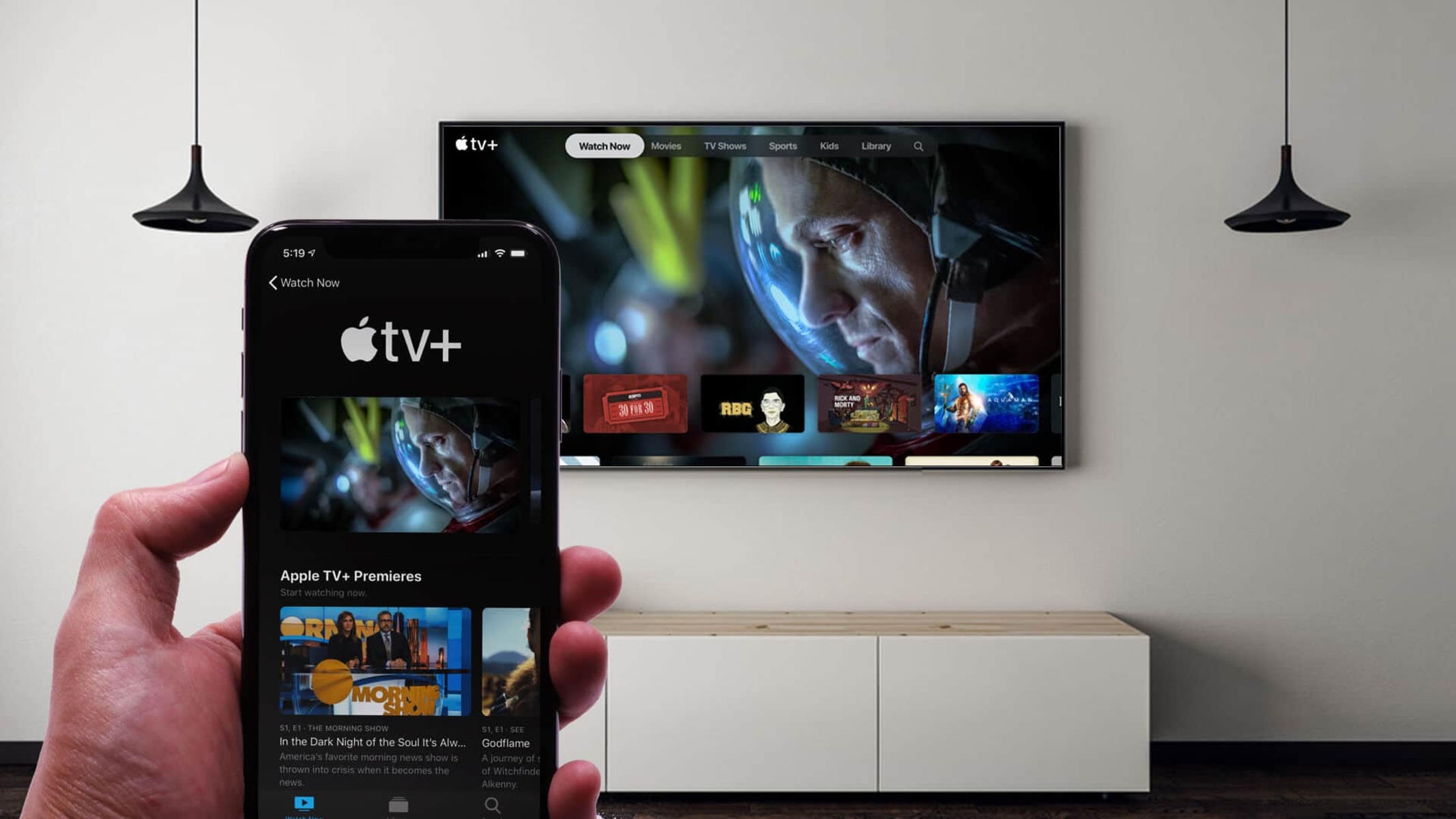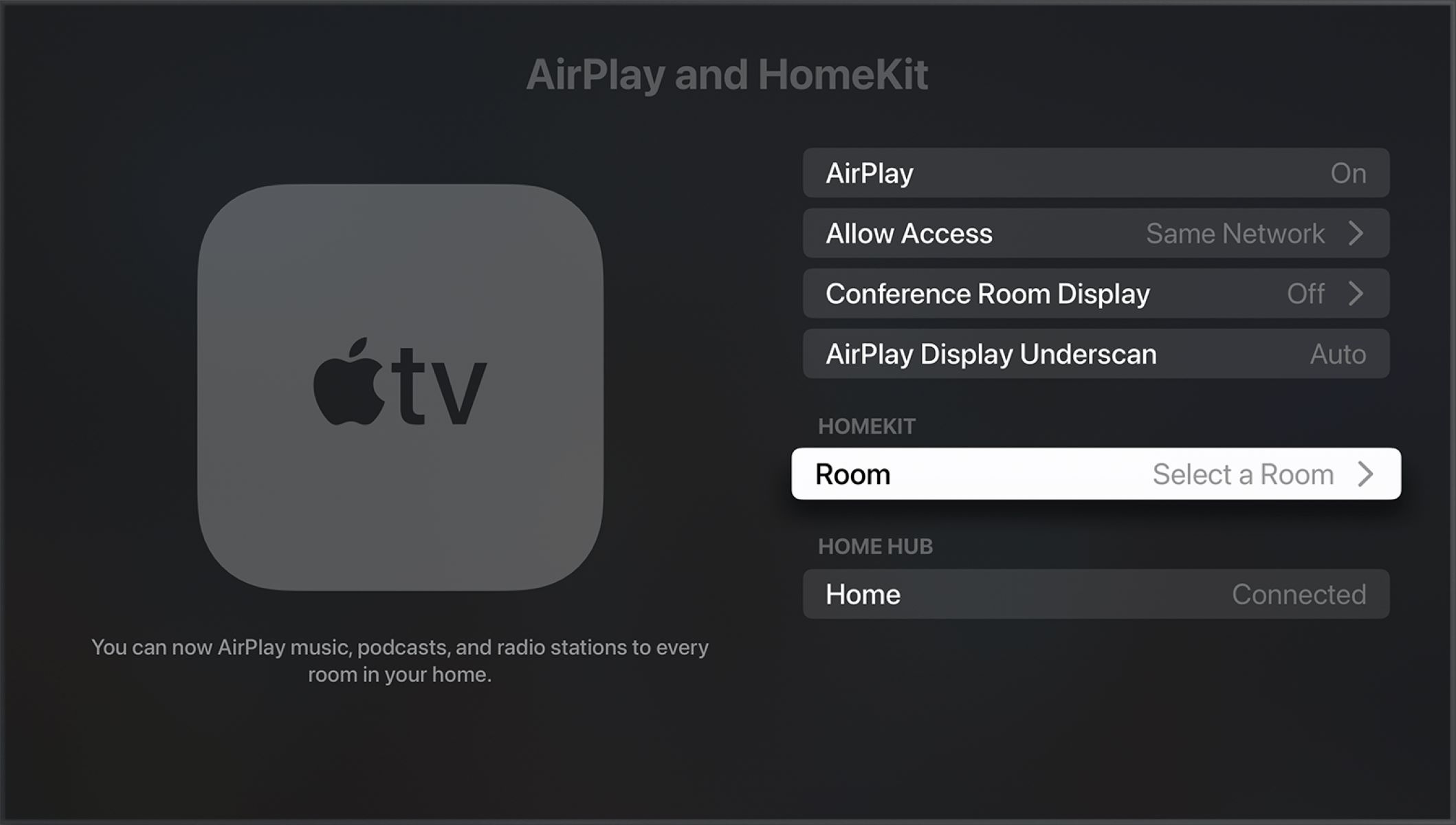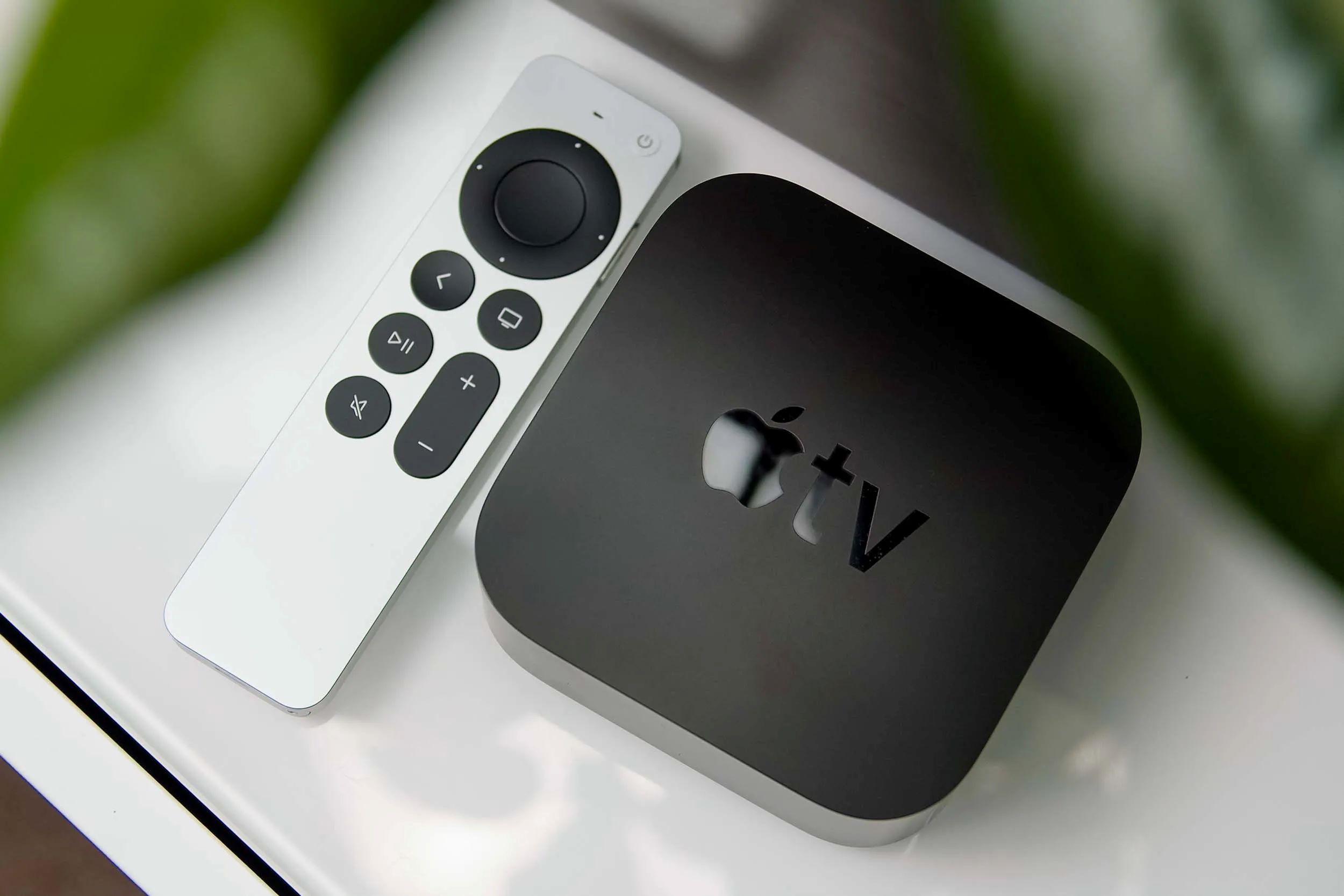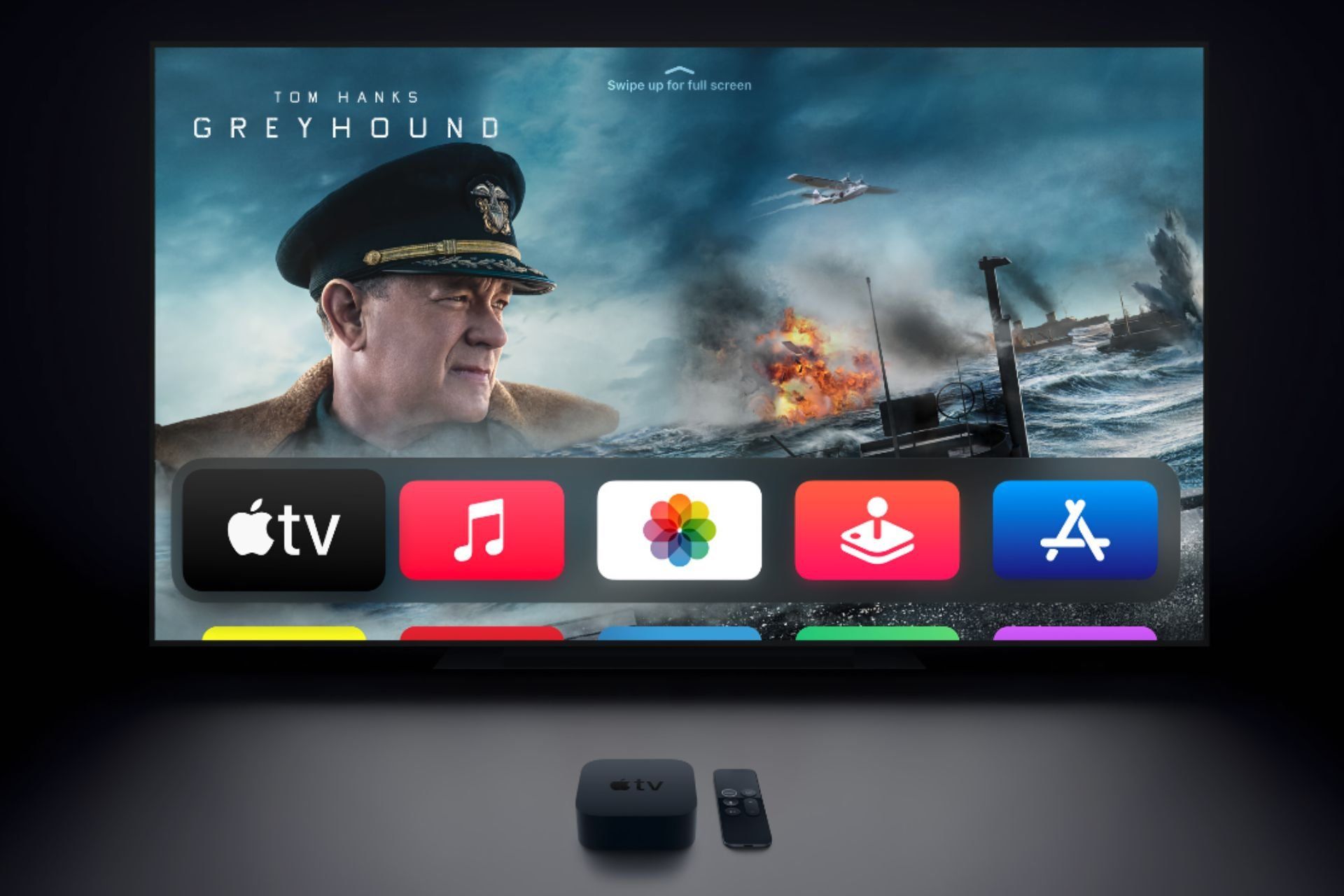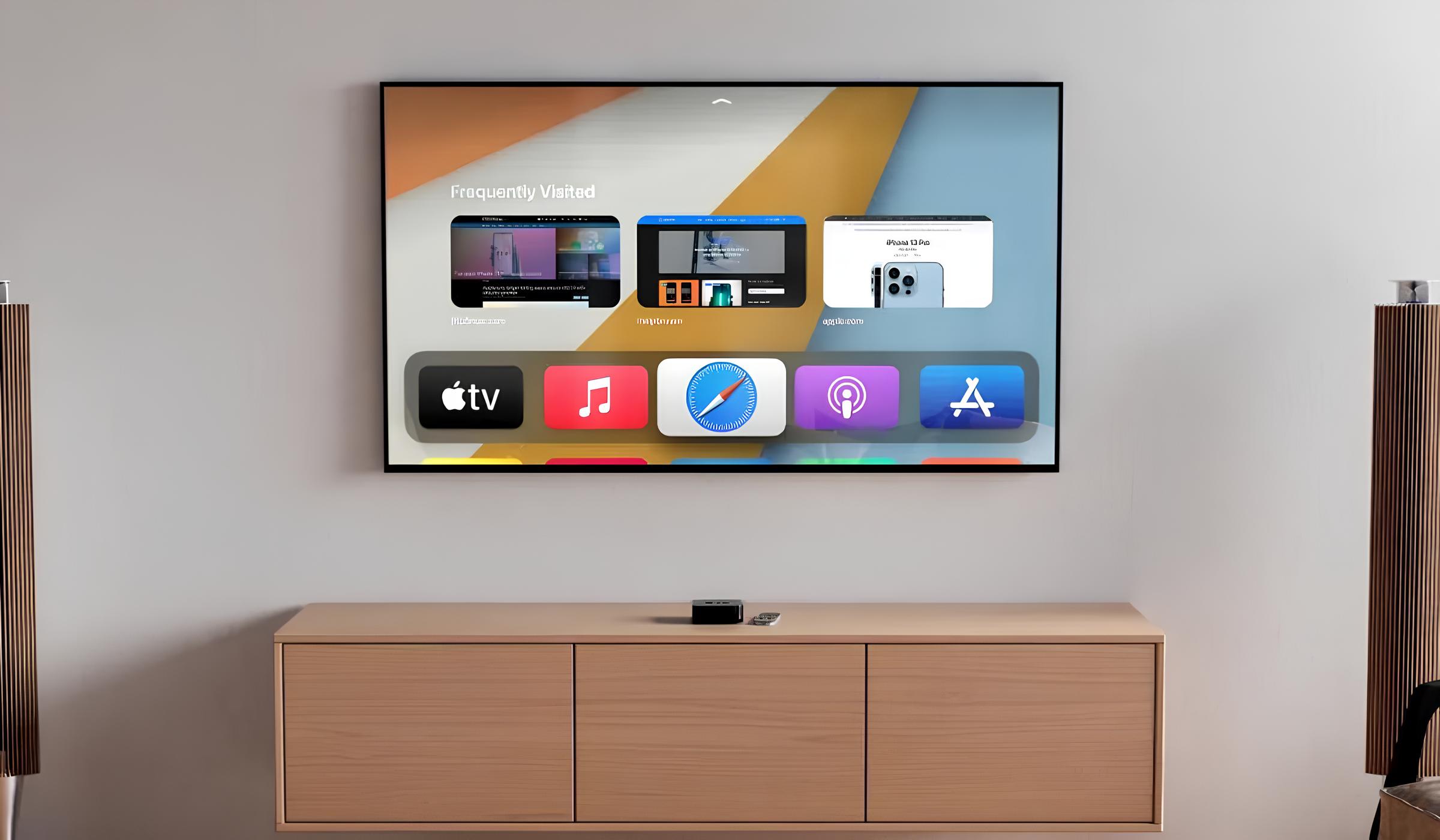Setting up Apple TV
Setting up Apple TV is a relatively simple process that allows you to access a world of entertainment right from your television. Whether you’re a tech-savvy individual or a newbie, following these steps will have you up and running in no time.
The first step is to gather all the necessary equipment. You’ll need an Apple TV device, an HDMI cable, a power cord, and a compatible TV set. Ensure that your TV has an available HDMI port, as this is how you’ll connect your Apple TV.
Once you have all the equipment, begin by connecting the HDMI cable to the HDMI port on your Apple TV, and then connect the other end to an available HDMI input on your TV. Next, plug in the power cord to your Apple TV and into a power outlet. Turn on your TV and select the correct input source to display the Apple TV interface.
The next step is to pair your Apple TV remote. If you have the latest model with a built-in touchpad, it should automatically pair with your Apple TV. However, if you have an older model with a separate remote, hold it close to your Apple TV and press and hold the Menu and Volume Up buttons simultaneously until the pairing indicator appears on your TV screen.
Once your remote is paired, follow the on-screen instructions to connect your Apple TV to your Wi-Fi network. Select your network from the list and enter the password if prompted. After successfully connecting to Wi-Fi, you’ll be prompted to sign in with your Apple ID. If you don’t have one, you can create a new Apple ID directly from your Apple TV.
After signing in, you can customize your Apple TV settings, such as language preferences, screen resolution, and audio settings. It’s recommended to choose the highest possible resolution that your TV supports to enjoy crisp and clear imagery. You can also enable automatic software updates to ensure that your Apple TV is always running the latest firmware.
Congratulations! You’ve successfully set up your Apple TV. Now, you can explore the various features and content that it offers, including streaming movies, TV shows, music, and even playing games. With easy navigation, voice control using Siri, and a wide range of apps to choose from, your entertainment options are virtually limitless.
Connecting Apple TV to your TV
Connecting your Apple TV to your television is a crucial step in the setup process, as it enables you to enjoy all the features and content that Apple TV has to offer. Here’s a step-by-step guide to help you connect your Apple TV to your TV.
First, check if your TV has an available HDMI port. HDMI is the standard method of connecting Apple TV to your TV, providing high-quality audio and video signals. Once you’ve identified an HDMI port, gather your Apple TV and HDMI cable.
Start by inserting one end of the HDMI cable into the HDMI port on your Apple TV. Make sure it’s firmly and securely connected. Then, insert the other end of the HDMI cable into the HDMI port on your TV. Remember which HDMI port you used, as you’ll need to select the corresponding input source on your TV.
Now, turn on your TV and grab your TV remote. Look for a button or key on your remote that allows you to change the input source. Press that button repeatedly until you see the Apple TV screen on your TV. It may take a few moments for the signal to be detected and displayed.
Once you see the Apple TV interface on your TV screen, congratulations! You have successfully connected your Apple TV to your TV. From here, you can proceed with the setup process by pairing your Apple TV remote and connecting to your Wi-Fi network.
It’s important to note that if your TV doesn’t have an HDMI port, you may need an HDMI to AV converter. This converter allows you to connect your Apple TV to a TV with AV inputs, such as composite or component connections. Consult your TV’s manual or a local electronics store for guidance on the specific converter you need.
Another connection option for older TVs is the analog audio and video cable. While this connection method can work, it doesn’t provide the same level of quality as HDMI. However, if HDMI or an HDMI converter is not available, using the analog audio and video cable can still allow you to connect and use your Apple TV.
Once your Apple TV is successfully connected to your TV, you can start exploring the wide range of entertainment possibilities it offers. Enjoy streaming movies and TV shows, playing games, listening to music, and even mirroring content from your other Apple devices directly to your TV.
Pairing your Apple TV remote
To fully utilize your Apple TV, it’s crucial to pair your Apple TV remote. The remote allows you to navigate through the Apple TV interface, control playback, and even interact with Siri. Here’s how you can easily pair your Apple TV remote.
If you have the latest Apple TV model with a built-in touchpad, the remote will automatically pair with your Apple TV during the initial setup process. This means you don’t need to go through any additional steps to pair your remote. Simply follow the on-screen instructions during the setup, and your remote will be ready to use once the Apple TV interface appears.
However, if you’re using an older model with a separate remote, you’ll need to manually pair it with your Apple TV. Here’s how:
- Make sure your remote has fresh batteries or is charged if it’s rechargeable.
- Bring your remote close to your Apple TV.
- Press and hold the Menu and Volume Up buttons simultaneously on your remote.
- Continue holding the buttons until the pairing indicator appears on your TV screen.
- Once the pairing is complete, the remote is now successfully paired with your Apple TV.
If you encounter any issues during the pairing process, try repositioning the remote closer to the Apple TV or replacing the batteries. Additionally, ensure that there are no obstructions between the remote and the Apple TV device.
After successfully pairing your Apple TV remote, you can now enjoy full control over your Apple TV experience. Use the touchpad or directional buttons to navigate through menus, press the Select button to make selections, and use the Menu button to go back or exit screens.
One of the standout features of the Apple TV remote is the built-in Siri functionality. By pressing and holding the Siri button on the remote, you can interact with Siri to control your Apple TV using voice commands. Simply say “Hey Siri” followed by your request, such as “Play the latest episode of my favorite show” or “Open Netflix,” and Siri will take care of the rest.
Pairing your Apple TV remote seamlessly integrates it with your Apple TV, granting you easy access to all its features. Enjoy navigating through apps, controlling media playback, and utilizing Siri for a truly interactive and convenient entertainment experience.
Navigating the Apple TV Interface
Once you’ve successfully set up your Apple TV and paired your remote, it’s time to start exploring the intuitive and user-friendly Apple TV interface. The interface is designed to be simple and straightforward, allowing you to easily navigate through the various apps, menus, and settings. Here’s a guide on how to navigate the Apple TV interface.
When you first turn on your Apple TV or wake it from sleep mode, you’ll be greeted with the Home screen. The Home screen is the central hub where you can access all your apps and content. You can use the touchpad on the Apple TV remote to swipe left, right, up, or down to move the focus and highlight different apps or options on the screen.
If you want to open an app, simply highlight it on the Home screen and press the touchpad to select it. This will launch the app and take you to its specific content or menu. To go back to the Home screen from within an app, press the Menu button on the Apple TV remote once or multiple times until you reach the Home screen.
The top row of the Apple TV interface is reserved for quick access to important features. You’ll find options like TV Shows, Movies, Music, Search, and Settings. Simply move the focus up to the top row and select the desired option to access its corresponding menu or content.
While navigating through menus or lists, you can use the touchpad to scroll and swipe, making it easy to find and select specific items. You can also use the directional buttons on the remote to move through lists, menus, or options with precision.
An additional feature of the Apple TV interface is the Control Center. To access the Control Center, simply swipe down on the Home screen or any app screen. The Control Center provides convenient access to features like AirPlay, Sleep, Subtitles, and Audio settings. You can use the touchpad to navigate within the Control Center and select different options.
For even faster navigation, you can use Siri to search for specific content or launch apps with voice commands. Simply press and hold the Siri button on the Apple TV remote and speak your request. For example, you can say “Open Netflix” or “Find action movies.” Siri will then perform the requested action or provide relevant search results.
Overall, the Apple TV interface is designed to be user-friendly and intuitive. With a combination of touchpad gestures, directional buttons, and Siri voice commands, you can effortlessly navigate through apps, menus, and settings to find the content you want to watch or interact with.
Using Siri on Apple TV
Siri, Apple’s intelligent voice assistant, brings a whole new level of convenience and interactivity to your Apple TV experience. With Siri, you can perform various tasks hands-free, search for content, control playback, and even get information about movies, TV shows, and actors. Here’s a guide on how to use Siri on your Apple TV.
To activate Siri, simply press and hold the Siri button on the Apple TV remote. The Siri button is located on the right side of the touchpad. When Siri is activated, you’ll see a waveform animation on the screen, indicating that you can start speaking your command or question.
One of the most useful features of Siri on Apple TV is its ability to search for content. You can ask Siri to find a specific movie, TV show, actor, or genre by saying something like “Show me action movies” or “Find comedies starring Jim Carrey.” Siri will then display the relevant search results, allowing you to select the content you want to watch.
In addition to searching for specific content, Siri can also provide information about movies, TV shows, and actors. You can ask Siri questions like “Who stars in The Crown?” or “What’s the rating for Joker?” Siri will retrieve the relevant details and display them on the screen, giving you instant access to valuable information about your favorite movies and TV shows.
Siri also allows you to control playback with voice commands. You can use commands like “Play,” “Pause,” “Skip,” or “Rewind,” making it easy to control your media without having to physically interact with the remote. For example, you can say “Play the next episode” or “Skip forward 10 minutes.”
Furthermore, Siri can help you set up reminders and perform basic tasks. You can ask Siri to create reminders, check the weather, or perform calculations. For example, you can say “Remind me to watch my favorite show tonight” or “What’s the weather like tomorrow?” Siri will handle these tasks and provide you with the desired information.
It’s important to note that Siri may not be available in all regions or languages. Before using Siri on your Apple TV, ensure that Siri is enabled and set up correctly in your device settings.
Using Siri on Apple TV enhances your overall experience by providing hands-free control and access to information. Whether you’re searching for content, controlling playback, or performing basic tasks, Siri simplifies the interaction with your Apple TV, allowing for a more convenient and engaging entertainment experience.
Streaming Content on Apple TV
One of the primary functions of Apple TV is to stream content directly to your television, giving you access to a vast library of movies, TV shows, music, and more. With a user-friendly interface and various streaming options, Apple TV offers an exceptional entertainment experience. Here’s a guide on how to stream content on your Apple TV.
When it comes to streaming content, there are several options available on Apple TV. The first and most popular option is Apple’s own streaming service, Apple TV+. Apple TV+ offers a growing collection of original movies, TV shows, and documentaries. To access Apple TV+, simply navigate to the Apple TV+ app on your Home screen and browse through the available content. You can search for specific titles, explore genres, or check out curated recommendations and exclusive shows.
In addition to Apple TV+, you can also stream content from popular third-party streaming services. Apps like Netflix, Hulu, Amazon Prime Video, Disney+, and many others are available for download on the App Store. After downloading the desired streaming apps, open them and sign in with your account credentials to access their libraries of movies, TV shows, and additional content.
Apple TV also offers a feature called AirPlay, which allows you to wirelessly stream content from your iPhone, iPad, or Mac directly to your Apple TV. Simply open the desired content on your Apple device, tap the AirPlay icon, and select your Apple TV as the AirPlay destination. This feature is particularly useful when you have personal videos, photos, or presentations that you want to showcase on the big screen.
Furthermore, Apple TV offers support for streaming music and podcasts. You can access your Apple Music library directly from the Music app on your Apple TV, allowing you to enjoy your favorite songs, create playlists, and discover new music. Additionally, you can listen to podcasts through the Apple Podcasts app, exploring a wide range of topics and enjoying your favorite shows.
When streaming content on Apple TV, you have the option to adjust the playback settings to suit your preferences. You can select different audio and subtitle languages, enable captions, and even customize video quality preferences. These settings can be accessed through the Settings app on your Apple TV.
Streaming content on Apple TV opens up a world of entertainment possibilities. With access to Apple TV+, third-party streaming services, AirPlay, and music and podcast streaming, you can enjoy a diverse range of content right from the comfort of your living room. Explore, discover, and immerse yourself in an endless array of movies, TV shows, music, and more on Apple TV.
Using Apple TV Apps
Apple TV offers a wide variety of apps that extend the functionality of your device beyond streaming movies and TV shows. These apps provide additional features and content, allowing you to customize your Apple TV experience to suit your preferences. Here’s a guide on how to use apps on your Apple TV.
The App Store on Apple TV is your gateway to an expansive collection of apps across various categories. To access the App Store, navigate to the App Store app on your Apple TV Home screen. From there, you can browse through different app categories, search for specific apps, and discover new and popular applications.
Once you’ve found an app you’re interested in, select it to view its details page. On this page, you’ll find information about the app, including a description, screenshots, reviews, and ratings. You can also see if the app is free or if it requires a purchase or subscription.
To install an app, simply select the “Get” or “Install” button on the app’s details page. If the app is paid, you’ll be prompted to confirm your purchase or enter your Apple ID password. After the installation is complete, the app will appear on your Apple TV Home screen, ready to be used.
Once you’ve installed an app, open it by selecting its icon on the Home screen. Each app has its own unique interface and features. Some apps may require you to sign in with an existing account, such as a streaming service or a social media platform. Follow the on-screen instructions to sign in or create a new account if needed.
Apps on Apple TV can provide a wide range of functionalities. Some apps focus on media streaming, offering access to movies, TV shows, music, or podcasts. Others may provide information, news updates, sports scores, or weather forecasts. There are also apps for gaming, fitness, shopping, education, and much more.
Navigating within an app is typically done with the touchpad on the Apple TV remote. You can swipe left, right, up, or down to move through menus, select options, or navigate through content. Some apps may have additional features like voice search, recommendations, or enhanced interactivity.
To customize your Apple TV app experience, you can rearrange the app icons on the Home screen. Simply select and hold an app icon until it starts to jiggle, then use the touchpad to move the app to a different position. You can also delete apps by selecting the app icon, pressing and holding the touchpad until the options menu appears, and selecting “Delete” or “Remove.”
Using apps on Apple TV allows you to tailor your entertainment and productivity experiences to your liking. Explore the diverse world of apps available on the App Store, discover new content and features, and make the most out of your Apple TV device.
Playing Games on Apple TV
Apple TV is not just a streaming device; it also offers a fantastic gaming experience. With an ever-growing collection of games available on the App Store, you can enjoy a variety of genres, from casual puzzles to immersive adventures. Here’s a guide on how to play games on your Apple TV.
First, make sure you have a compatible Apple TV game controller. While some games can be played using the Siri Remote’s touchpad and buttons, many games are optimized for a dedicated game controller. You can connect compatible controllers like the Apple TV Remote, Xbox Wireless Controller, or PlayStation DualShock controller to your Apple TV via Bluetooth. Simply go to the Settings app, select “Remotes and Devices,” and then choose “Bluetooth” to pair your game controller.
Once you have a game controller connected, navigate to the App Store app on your Apple TV Home screen. In the App Store, select the “Games” tab to explore the vast selection of games available. You can browse featured games, top charts, and categories to find the type of game you’re interested in.
When you’ve chosen a game, select it to view its details page. Here, you’ll find information about the game, including screenshots, videos, descriptions, user reviews, and ratings. Take the time to read through this information to get a sense of whether the game suits your preferences.
To download a game, select the “Get” or “Download” button on the game’s details page. If the game is free, it’ll begin downloading immediately. If it’s a paid game, you’ll be prompted to confirm your purchase or enter your Apple ID password. Once the download is complete, you’ll see the game’s icon on your Apple TV Home screen.
Open the game by selecting its icon on the Home screen. Most games have their own dedicated interfaces and control schemes. Some may require an additional setup process or account registration to get started. Follow the on-screen instructions to set up the game if necessary.
Once you’re in the game, use your game controller to navigate menus, make selections, and control gameplay. Each game will have its own unique controls and mechanics, so refer to the game’s instructions or tutorial for guidance on how to play.
Apple TV games offer a wide range of genres and gameplay experiences. Whether you’re into multiplayer competitions, adventure quests, puzzle challenges, or sports simulations, there’s a game out there for you. And with regular updates and new releases, there’s always something fresh to discover on the App Store.
When you’re finished playing a game, you can simply exit to the Apple TV Home screen or switch to another app or game. Your progress in most games will be saved automatically, allowing you to pick up where you left off.
Playing games on Apple TV provides an immersive and entertaining experience. With a vast selection of games available on the App Store and the ability to connect compatible game controllers, you can enjoy hours of gaming fun right on your television screen.
Watching Live TV and Sports on Apple TV
Apple TV not only gives you access to on-demand streaming content, but it also provides options for watching live TV and sports right on your television screen. With various apps and services available, you can stay up-to-date with your favorite TV shows, news, and sports events. Here’s a guide on how to watch live TV and sports on your Apple TV.
To watch live TV on your Apple TV, you can use apps from cable or satellite providers, streaming services, or even dedicated live TV apps. Many cable and satellite providers offer their own apps that allow you to stream live TV channels by signing in with your provider credentials. Check with your service provider to see if they have an app available for Apple TV.
For cord-cutters, there are also streaming services that offer live TV channels, such as Hulu + Live TV, YouTube TV, and Sling TV. These services require a subscription and often provide a wide range of channels covering news, entertainment, sports, and more. Simply download the respective app from the App Store, sign in, and start streaming live TV.
If you’re a sports fan, there are dedicated sports apps available on Apple TV that offer live sports coverage, highlights, and analysis. Popular sports apps like ESPN, NBC Sports, and NBA League Pass provide live streaming of games, on-demand replays, and access to exclusive content. You can download these apps from the App Store and sign in with your existing subscription or purchase a subscription directly within the app.
In addition to cable provider apps and streaming services, Apple TV also supports over-the-air broadcasts. You can connect an HD antenna to your Apple TV and use the Live Channels app to access and watch free local channels in your area. This is a great option if you want to have access to local news, sports, and other broadcasts.
It’s worth noting that some live TV and sports apps may require a separate subscription or in-app purchase to access the content. Be sure to check the details of each app and its pricing before making a purchase or subscribing to a service.
Once you’ve downloaded and installed the desired live TV or sports app, open it on your Apple TV and follow the on-screen instructions to sign in or set up your preferences. From there, you can browse the available channels, schedule recordings, access on-demand content, and even customize your sports preferences to receive personalized alerts and scores.
Watching live TV and sports on Apple TV offers a convenient and enjoyable way to keep up with your favorite shows, news, and sporting events. With a variety of apps and options, you can create a personalized TV viewing experience and never miss a moment of the action.
Casting and Mirroring from Other Devices to Apple TV
One of the great features of Apple TV is its ability to cast and mirror content from other devices, such as iPhones, iPads, and Macs. This allows you to share photos, videos, presentations, and even apps directly on your TV screen. Here’s a guide on how to cast and mirror from other devices to your Apple TV.
To cast or mirror content to your Apple TV, both your Apple TV and the device you’re casting from needs to be connected to the same Wi-Fi network. This ensures a smooth and seamless connection between the devices.
If you’re using an iPhone, iPad, or iPod touch, swipe up from the bottom of the screen to access the Control Center. On newer iPhones with Face ID, swipe down from the top-right corner of the screen. Tap on “Screen Mirroring” or “AirPlay Mirroring,” and select your Apple TV from the list of available devices. Your device’s screen will now be mirrored on your TV.
If you want to cast specific content, such as a video or photo slideshow, open the app you want to cast from. Look for the AirPlay icon, usually represented by a rectangle with an arrow pointing up. Tap on it and select your Apple TV from the available devices. The content will now be casted to your TV while allowing you to continue using your device for other purposes.
If you’re using a Mac, click on the AirPlay icon in the menu bar, usually located at the top-right corner of the screen. Select your Apple TV from the list of available devices to start mirroring your Mac’s screen on your TV. You can also cast specific content from apps that support AirPlay by clicking on the AirPlay icon within the app and selecting your Apple TV as the destination.
When casting or mirroring from other devices to your Apple TV, it’s important to note that the audio will also be played through your TV or connected speakers. If you want to use separate audio devices, you can adjust the audio output settings on your Apple TV.
During mirroring or casting, you can use your Apple TV remote to control the playback, volume, and other settings on your TV. Any actions performed on your device, such as scrolling or tapping, will be reflected on the TV screen.
To stop casting or mirroring, simply go back to the Control Center or AirPlay menu on your device and select “Stop Mirroring” or “Disconnect.” Your device’s screen will return to normal, and the content will no longer be displayed on your TV.
With the ability to cast and mirror content from other devices, Apple TV expands its versatility and allows for a seamless integration with your existing Apple devices. Whether for sharing photos, presenting slideshows, or enjoying multimedia content, casting and mirroring to your Apple TV creates a more immersive and engaging viewing experience.
Customizing your Apple TV Settings
Apple TV offers a range of customizable settings that allow you to personalize your viewing experience and optimize your device’s performance. By adjusting settings such as display preferences, audio settings, accessibility features, and more, you can tailor your Apple TV to suit your needs. Here’s a guide on how to customize your Apple TV settings.
To access the Apple TV settings, navigate to the Settings app on your Apple TV Home screen. In the Settings menu, you’ll find a variety of options to customize and fine-tune your device.
The Display and Audio settings enable you to adjust the visual and audio output of your Apple TV. In the Display settings, you can select the display resolution that best matches your TV’s capabilities, set the aspect ratio, and customize the color calibration. The Audio settings allow you to adjust the audio output, including choosing the audio format, enabling or disabling Dolby Atmos, and setting volume levels.
Accessibility settings on Apple TV allow you to enhance your viewing experience for individuals with visual, hearing, or physical impairments. You can adjust subtitle settings, such as font size, color, and style, to make the text easier to read. Audio accessibility features include options for closed captions, audio descriptions, and volume control. Additionally, there are physical and motor settings, such as switch control, that assist individuals with limited mobility.
In the General settings, you can customize various aspects of your Apple TV experience. You can change the language, region, time zone, and date and time settings to align with your preferences. Additionally, you can enable or disable features like automatic software updates, location services, and viewing restrictions.
The Network settings allow you to connect your Apple TV to Wi-Fi networks, manage network settings, and configure advanced network options. You can set up Wi-Fi manually or automatically, and also connect via Ethernet if desired. In the Network settings, you can also check your network status, change DNS settings, and access other network-related features.
When it comes to privacy and security, Apple TV gives you control over your personal data. In the Privacy settings, you can manage app permissions, control what data is shared with app developers, and reset or manage your Apple TV advertising identifier. Additionally, you can set up restrictions for content and configure parental controls to ensure a safe viewing environment.
Customizing your Apple TV settings allows you to create a personalized and optimized viewing experience. By adjusting display and audio settings, enabling accessibility features, configuring network settings, and managing privacy and security options, you can make your Apple TV work best for you and your entertainment needs.
Troubleshooting Common Apple TV Issues
While Apple TV generally provides a seamless entertainment experience, you may encounter certain issues that can disrupt your viewing pleasure. However, many common Apple TV issues can be resolved with a few troubleshooting steps. Here’s a guide to help you troubleshoot and resolve common Apple TV issues.
If you’re experiencing connectivity problems, start by checking your internet connection. Ensure that your Apple TV is connected to your Wi-Fi network or Ethernet properly. Restarting your modem and router can also help refresh the connection. You can find the network settings under the Settings app on your Apple TV, where you can reconnect or change your Wi-Fi network if needed.
If you’re unable to connect to the App Store or experience slow or unresponsive behavior, it’s worth restarting your Apple TV. Go to the Settings app, select “System,” and then choose “Restart.” This simple step can often resolve temporary glitches or software issues.
If you’re having trouble with audio or video playback, first check the connections between your Apple TV and your TV or speakers. Ensure that the HDMI cable is securely plugged into both devices. If you’re using an audio receiver, make sure it’s properly set up and the correct audio input is selected. You can also try adjusting the audio and video settings in the Apple TV settings menu to troubleshoot specific issues.
If a specific app is crashing or freezing, try updating the app to the latest version from the App Store. If the issue persists, you can try force quitting the app by double-clicking the TV button on the Apple TV remote, swiping left or right to find the app, and then swiping up to close it. Relaunch the app to see if the issue is resolved.
In instances where the Apple TV is unresponsive or not turning on, check the power connection and make sure it’s properly plugged in. If using a power strip, ensure that it’s turned on and functioning. If the issue persists, you can try resetting the Apple TV by pressing and holding the Menu and Home buttons on the remote simultaneously for about six seconds until the status light on the Apple TV flashes rapidly.
If you’re experiencing audio sync issues, where the sound and video are not perfectly aligned, you can adjust the audio sync settings. Under the Settings app, select “Audio and Video,” and choose “Audio Sync.” You can then adjust the audio delay to sync it with the video playback.
If you’re unable to find a solution for your Apple TV issue through basic troubleshooting, you can visit the Apple Support website or contact Apple Support for further assistance. Their knowledge base and support team can provide more specific guidance based on the issue you’re experiencing.
By following these troubleshooting steps, many common Apple TV issues can be resolved, allowing you to enjoy uninterrupted entertainment on your Apple TV. Remember to check your connections, restart your device, update apps, and explore more specific troubleshooting options as needed to address any problems you may encounter.







